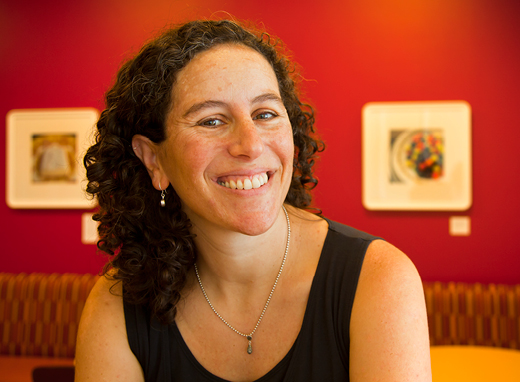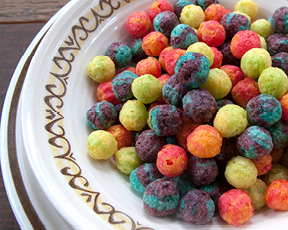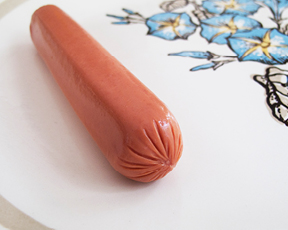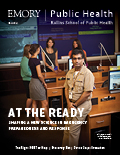Environs Gallery blends art and environmental sciences

Karen Levy collaborated with the Savannah College of Art and Design to develop rotating exhibits with an environmental health theme.
A blank canvas. That’s what Karen Levy thought as she surveyed the ample wall space on the second floor of the Claudia Nance Rollins (CNR) Building.
Levy is not an artist. She’s an environmental scientist assigned to enhance her department’s visual surroundings prior to moving into the new CNR Building last summer.
With the support of Department of Environmental Health Chair Paige Tolbert, Levy reached out to Emory’s Center for Creativity & Arts with a concept to bring the bare walls to life with artistic interpretations of environmental health topics.
  The “Baloney” exhibit is on display in the Environs Gallery in the Department of Environmental Health. The photographs by Caroline Rumley depict the impact of additives on the safety of cereal, hot dogs, and other processed foods. |
Her efforts led her to Mark Wentzel, a professor in the sculpture department at the Savannah College of Art and Design. Last fall, they opened Four Fields, a pilot exhibit to connect environmental health themes with art. The exhibit featured the work of four Atlanta-based artists including Wentzel, Susan Krause, Steve Jarvis, and Allen Peterson. Their sculptures approached issues of science and environmental health from a creative point of view.
“The exhibits push our thoughts about the broader meaning of environmental health,” says Levy. “It’s interesting to read or hear about science, but to view science in an artistic manner has been useful in expanding the way that we think about these topics.”
Currently, the second exhibit, titled “Baloney,” features the photography of Caroline Rumley. The series of seven photographs illustrates basic food items such as cereal and bread to depict the impact of additives on the safety of processed foods. The exhibit’s title is a reference to the use of sodium nitrate to stabilize the red color in meats such as hot dogs and bologna. According to the exhibit description, the additive is exempt from the FDA’s regulation process, even though it has been linked to cancer.
Rumley’s photographs are displayed in the Environs Gallery, located in the department’s break room, where faculty, staff, and students gather. Future ideas for the initiative include additional rotating art pieces, panel discussions, student competitions, and student exchange programs to cross-pollinate ideas between artists and scientists in various fields of study throughout Rollins.
As Levy notes, “This is an opportunity to gain knowledge, expand thoughts about research, and scientifically and creatively interpret our surroundings.”—Tarvis E. Thompson


